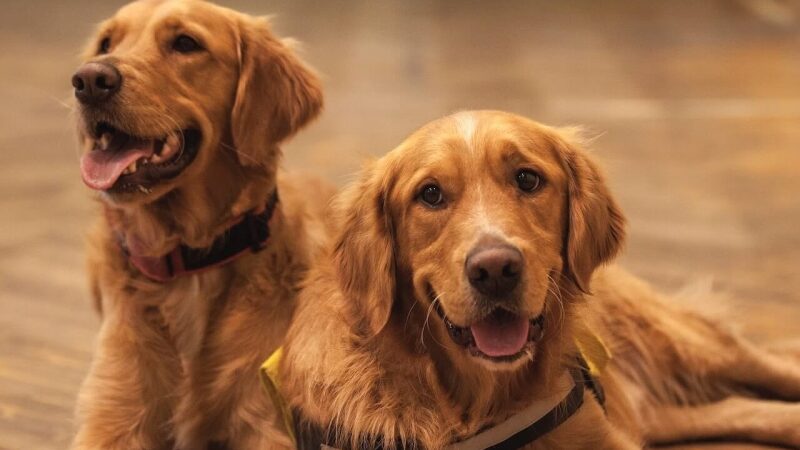
How To Craft A Cozy Cat Vest From Fabric Strips
Have you ever seen your feline friend lounging around and thought, “What could possibly make this picture more adorable?” The answer is simple: a cat

Tactical harnesses are ideal for keeping working dogs safe and secure during demanding tasks. But like any pet gear, it requires proper use to maximize functionality. Avoid hassles by following these quick tips for straightforward harnessing and adjustments.
Conduct a quick inspection of the harness and dog prior to gearing up:
Taking a few minutes to ensure everything looks good prevents problems down the road. Address any maintenance or grooming issues beforehand.
Follow a consistent sequence each time you harness your dog to build a smooth routine:
Starting with everything unfastened lets you slip the harness on easily.
Positioning the harness correctly from the start prevents backward outfitting.
Getting the legs situated first ensures proper harness orientation.
Cinching the girth strap secures the harness snugly in position.
Chest and belly straps stabilize the harness frame atop the dog.
Accessories like leashes, packs, and pouches mount onto the finished harness frame.
Following this sequence becomes second nature with practice. The steps quickly become a habit.
A comfortable, secure fit prevents slipping, rubbing, and other harness problems.
Find a customized fit for the dog’s body shape and use.
Keep adjusting the harness until it stabilizes in the right place without pinching or chafing.
Build up conditioning slowly, especially for long mission wear.
Correct harness adjustments enhance comfort, control and function. Don’t ignore signs of poor fit.
Place key harness parts properly for ideal function:
Central front rings give the handler maximum steering control.
Back placement balances accessory loads on the dog’s center of gravity.
Standard left-side ID patch placement lets others readily identify working dogs.
Taking a moment to correctly position components helps optimize the harness’s functionality.
Smooth gearing up and down prevents problems:
Low-stress loading prevents struggling that can damage the harness or dog. Go slow.
Methodical unloading helps avoid entanglements. Prevent shaking or pawing at the harness to avoid damage.
Stay patient, calm and purposeful when outfitting your dog. The process should never be a struggle.
Continuously monitor harness condition and fit:
Prevent major issues through vigilant oversight. Erring on the side of caution protects the dog.
Harness struggles occasionally happen but can be easily addressed:
Causes: Loose straps, poor fit, body shape changes
Solutions: Tighten straps, try different sizes, adjust style
Causes: Tight or loose straps, poor conditioning
Solutions: Adjust fit, introduce gradually, protect hot spots
Causes: Discomfort, lack of conditioning, overstimulation
Solutions: Improve fit, slow introductions, use distraction and reward
Causes: Wear and tear, incorrect use, manufacturing defects
Solutions: Assess and replace damaged parts, contact manufacturer
Causes: Ill fit, overexertion, negative association
Solutions: Reassess sizing, build up conditioning, and make positive
Careful troubleshooting identifies the root cause so it can be effectively addressed. Most issues can be fixed with small harness adjustments or training modifications.
Simple care and maintenance optimize longevity.
Proactive care reduces wear and tear for greater value. Know when to repair vs. replace for safety.
Shared harnesses among multiple working dogs require extra diligence:
One harness may fit several dogs but monitor closely. Replace at the first sign of significant wear.
Training creates positive harness associations:
Prevent struggle by pairing the harness with enrichment. Keep early sessions low-key and upbeat.
With routine practice, using a tactical dog harness becomes second nature. Keep a streamlined process for proper outfitting in inefficient, low-stress ways.
Monitor fit closely and make adjustments at the first sign of problems. Address training challenges through positive, engaging conditioning. Perform regular maintenance and know when replacement is needed.
By making harness use quick and easy, you set your working dog up for success on every mission.


Have you ever seen your feline friend lounging around and thought, “What could possibly make this picture more adorable?” The answer is simple: a cat

The moment you consider a dog hunting vest for your adventurous companion, you’re stepping into a world where safety meets functionality. This vest is not

The concept of a dog cooling vest is a game-changer for pet owners looking to enhance their dog’s comfort during those relentless summer days. Imagine

When you first consider crafting a tactical dog vest, it’s not just about embarking on a fun DIY project; it’s about ensuring your furry companion’s

Have you ever seen your feline friend lounging around and thought, “What could possibly make this picture more adorable?” The answer is simple: a cat

The moment you consider a dog hunting vest for your adventurous companion, you’re stepping into a world where safety meets functionality. This vest is not

The concept of a dog cooling vest is a game-changer for pet owners looking to enhance their dog’s comfort during those relentless summer days. Imagine

When you first consider crafting a tactical dog vest, it’s not just about embarking on a fun DIY project; it’s about ensuring your furry companion’s
Secure and Empower, Walk Responsibly
Copyright © 2024pettacticalharness. All Rights Reserved.